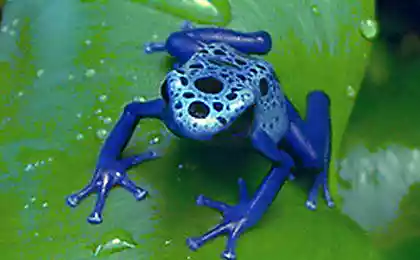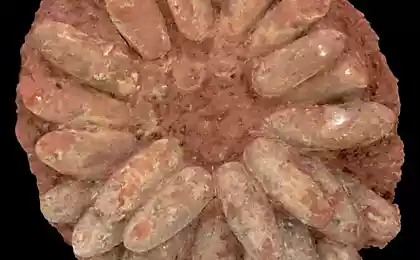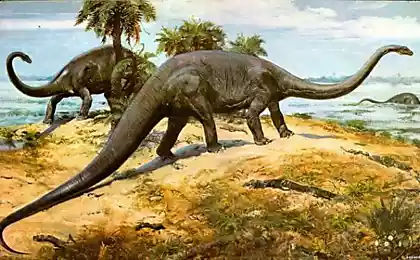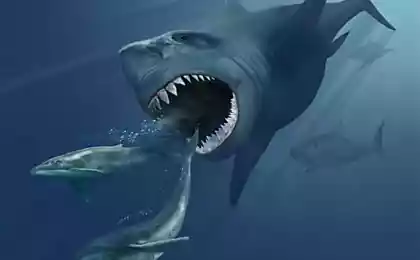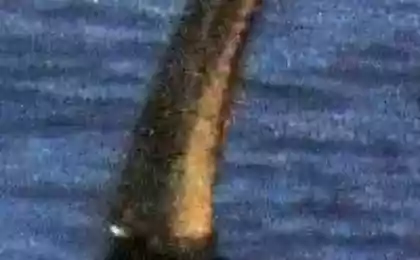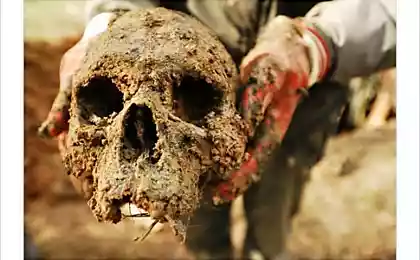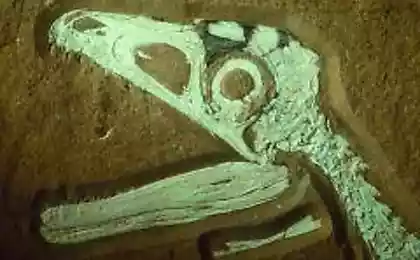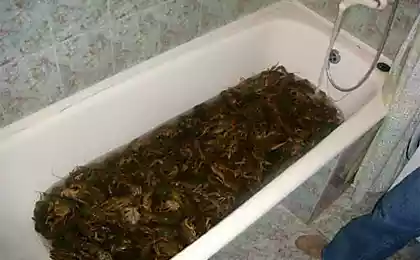761
Paleontologists have found the remains of an ancestor's largest crayfish and scorpions
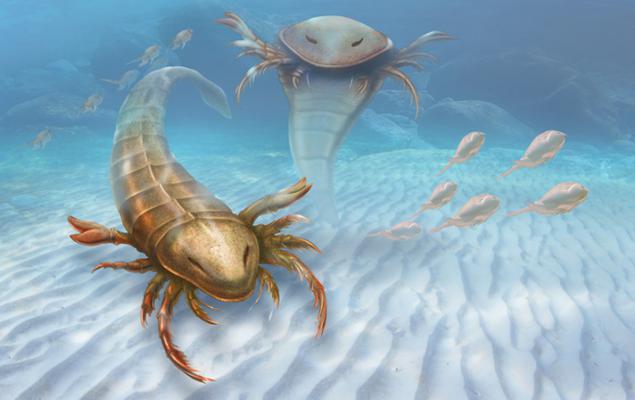
Illustration Patrick Lynch / Yale University i>
Палеонтологи Yale University spoke about the recent discovery of fossil remains of a giant marine predator, the ancestor of modern scorpions. The remains were handed over to the researchers geologists from the University of Iowa, Iowa studied the bottom of the river. A study of the remains of changed view of scientists about evolution merostomes.
In 2010, Iowa geologists studied impact crater on the bottom of the Iowa River (a tributary of the Mississippi), until she left the water because of a temporary dam. Discovered in the crater of the fossils they gave paleontologists, and those of their carefully studied, dated the remains of 467 million years. Remarkably preserved shells of animals showed the scientists a new view of ancient marine predators.
Predator call Pentecopterus, in honor of the Greek galleys pentekonter , which existed already in the Trojan War. Giant sea scorpion can grow up to 2 meters in length, it had a large head of the shell, narrow body and long front legs, which he grabbed prey. Pentekopter was the oldest of the described science ракоскорпионов - arthropods that have become the ancestors of modern spiders, ticks, and lobsters.

pentekonter i>
"Finding lets say that merostomes appeared 10 million years earlier than we thought, and the relationship of the animal to other merostomes show that they are very diverse in the early stages of evolution, although their remains are rarely found - said James Lemsdel ( James Lamsdell), a candidate for Doctor of Sciences, lead author of the study. - Pentekoptery were large predators and merostomes all had to play a leading role in the ecosystem of the Paleozoic ».
Geologists found fossils of very well preserved. Among them were like shells of adult animals and their young. "Nakhodka Vinnishike - an amazing discovery - says co-author, a paleontologist Derek Briggs (Derek Briggs). - Preserved fossils in the layers of sedimentary rocks, where the sea has flooded the crater left from a fallen meteorite with a diameter of about 5 km. " The water at the bottom of the crater was poor in oxygen, leaving the remains are well preserved to this day.
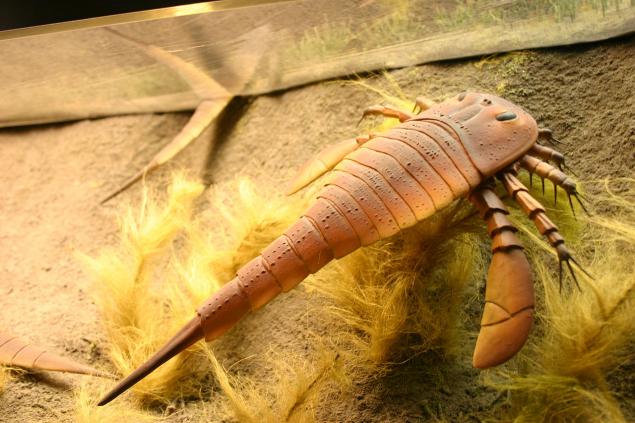
Model merostomes representative, demonstrated at the National Museum of Natural History in Washington, i>
Most ancient merostomes less than 20 cm in length. They existed during the Paleozoic (510 - 248 million. Years ago), and about 325 million. Years ago, gradually began to move from sea water into fresh water.
Source: geektimes.ru/post/261228/
Experiment: What affects the lighting in the restaurant
Set smart clothes from Sensoria for joggers: my own fitness tracker



